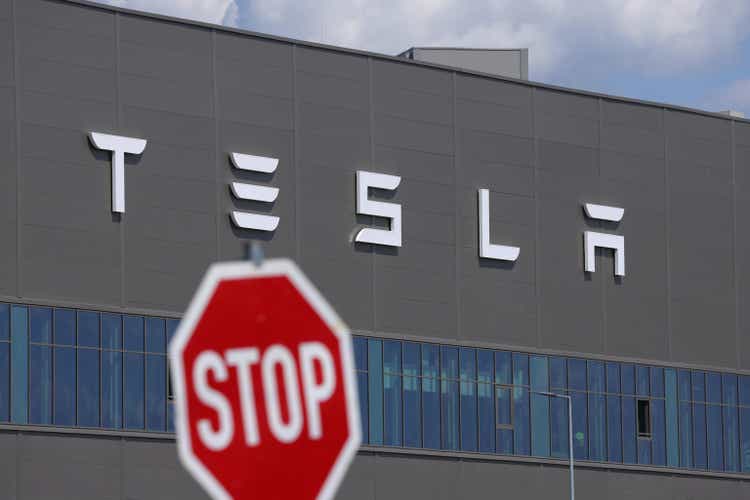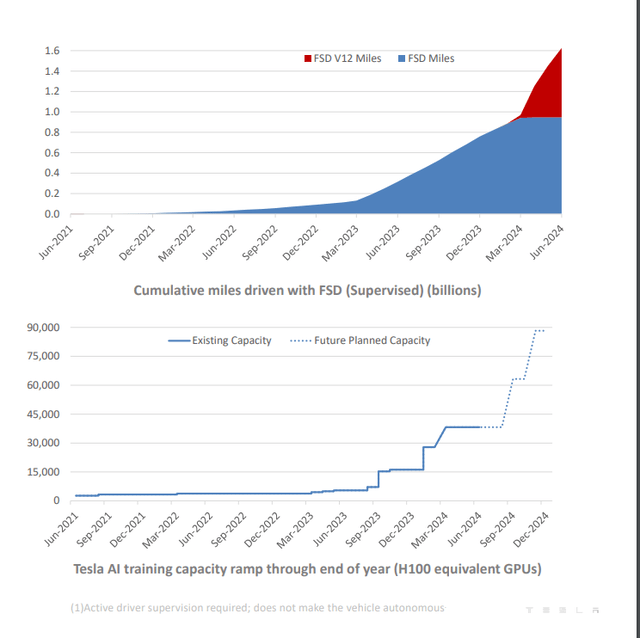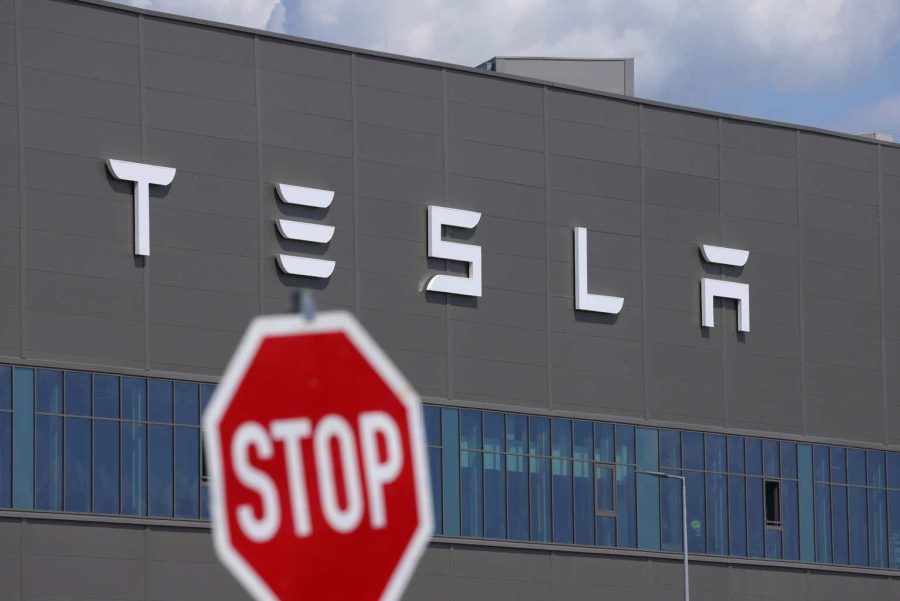Summary:
- Tesla is set to host a Robotaxi reveal event in October.
- Despite recent progress, Tesla’s Full Self-Driving (“FSD”) still has a long way to go.
- Musk has a habit of overpromising on autonomous driving timelines, I expect this event to be no different. Ignore the spin.

Sean Gallup
Tesla (NASDAQ:TSLA) is slated to unveil its long-awaited and anticipated Robotaxi at an event in Los Angeles on October 10th, which the company and founder/CEO Elon Musk have hyped as the transportation method of the future. Powered by Tesla’s Full Self-Driving (“FSD”), these vehicles require no human supervision and can pick you up and drop you off without incident. However, we’ve heard similar promises from Musk before. Is this time for real or are we being fooled again?
Robotaxi: Always One Year Away
It sounds like a grand vision doesn’t it? A fleet of cars at your beck and call that are affordable, sleek, uniform, safe, and efficient. And one day, it may be a reality. But this year? This decade? The more self-driving technology matures, the more it reveals just how much work remains to be done.
However, the past 12 months have seen immense progress across the self-driving world. Earlier this year, Waymo passed 10 million miles driven and 1 million paid rides across its operations in the Phoenix and San Francisco area, and was up to nearly 100,000 rides a week in August. Baidu’s (BIDU) self-driving fleet in Wuhan has been so cheap and effective it has human cab drivers worried about their livelihoods, and Tesla’s FSD version 12.5 was released to positive reviews from users after previous versions have underwhelmed.
That said, Musk has been hyping up a fully autonomous mode on Tesla vehicles and fully autonomous Tesla taxis for a long time. In fact, 2024 will mark ten years in a row that Musk has promised autonomous driving in a capacity that has so far failed to come to fruition. In 2014, Musk claimed that in less than a year’s time 90% of a Tesla driver’s miles traveled would be on Autopilot. In 2016, he said Tesla’s autonomous driving mode was safer than a human. In 2019, he claimed that in a year’s time, Tesla would have 1 million Robotaxis on the road. In July 2023, Musk expressed that by the end of the year, Tesla will have cracked fully autonomous driving and offered it to its customer base.
While we can debate whether some of these statements were technically correct in some aspects, it is clear that Musk and Tesla have been building anticipation for FSD for a long time even as the tech has not achieved the lofty goals that they have pitched to customers and investors year in and year out for a decade. Fool me nine times, shame on you. Fool me ten, times shame on me, right?
Even with recent improvements, I am skeptical that this upcoming Robotaxi event will reveal anything more than slick, ambitious prototypes of which we have seen many from Tesla throughout the years. Musk has a concept of an idea of a plan for the automated taxi of the future, but while he hypes it by hosting impressive events, there are companies out there who are already substantially closer to making that a reality. Further, the idea that Musk has endorsed that as FSD improves, it will be backward compatible with Tesla models on the road today, is a fantasy. Even if Tesla cracked Level 5 tomorrow, these vehicles lack the hardware that such software would require to function. At best, Tesla’s current FSD is Level 2, meanwhile Mercedes-Benz is already selling a Level 3-rated vehicle in the US and Waymo has been successfully operating a Level 4-rated fleet for years.
Just like with “Autopilot”, “Full Self-Driving” is a marketing term that attempts to show Tesla as further along in the autonomous vehicle process than it is. Of course, this is Musk’s MO and he is a master of whipping the market into a frenzy. For example, he recently argued that, on the back of self-driving success, Tesla could be worth $5 trillion by the end of the decade. Perhaps another case of over-promising.
It’s unfortunate that Musk has consistently exaggerated the capabilities of FSD, but because he will likely continue to do so, investors should look past the spin and instead look at what the company is actually accomplishing. One such upcoming announcement will be FSD approval in Europe and China, which Musk said they expect by year end. Regulator reactions and their evaluations of the system will be key indications into the maturity of the system, and any doubts or even an outright rejection would be disastrous.
While I’ve been pretty negative on Tesla’s autonomous ambitions so far, if you can look past the spin, the company has been making modest progress:

Tesla Q2 Presentation
Here we can see that the dataset Tesla is using to train FSD has been increasing exponentially, and it has been securing the hardware (Nvidia H100 GPUs) to perform those computations. After the system had stagnated a bit, version 12.5 brought some impressive improvements, so perhaps as the company collects more data and iterates on its model, we’ll see significant steps towards an FSD level-up.
Further, although Musk has a bit of a habit of embellishing, it is in part due to that style of marketing that has built Tesla into the brand it is today. As an investor, it would be best to ignore the spin and analyze the actual data while also acknowledging that the spin tends to work on the average consumer in Tesla’s favor. So I’d simply encourage those looking to invest to let others be reeled in by grand promises while you look at the facts.
Investor Takeaway
Musk has been a serial over-promiser when it comes to Tesla’s autonomous driving capabilities and the upcoming reveal of the Robotaxi will likely be no different. While there are signs the company is improving its FSD software, including scaling out its AI compute and gathering tons of training data for its self-driving models, investors should not be fooled by the fantastical timelines that will almost surely be presented at the upcoming Robotaxi event.
The self-driving car market will take a while to mature and generate inflows but estimates are in the hundreds of billions in potential revenue by the mid 2030s for the companies that can figure it out. Tesla has ground to make up technologically, but the company has the engineering expertise, the training data, and the brand to become an autonomous driving powerhouse. I just don’t think it’ll happen this year, next year, or before the end of the decade no matter what Musk says in October.
So for those who are investing in TSLA hoping for such an outcome, make sure you have a long-term horizon because it will be quite a while. I fear short-term or medium-term investors hoping for an announcement of a surprise leap forward from this Robotaxi event or within the next couple years even, will be sorely disappointed.
Thanks for reading!
Analyst’s Disclosure: I/we have no stock, option or similar derivative position in any of the companies mentioned, and no plans to initiate any such positions within the next 72 hours. I wrote this article myself, and it expresses my own opinions. I am not receiving compensation for it (other than from Seeking Alpha). I have no business relationship with any company whose stock is mentioned in this article.
Seeking Alpha’s Disclosure: Past performance is no guarantee of future results. No recommendation or advice is being given as to whether any investment is suitable for a particular investor. Any views or opinions expressed above may not reflect those of Seeking Alpha as a whole. Seeking Alpha is not a licensed securities dealer, broker or US investment adviser or investment bank. Our analysts are third party authors that include both professional investors and individual investors who may not be licensed or certified by any institute or regulatory body.
